Feeding wild birds can be a calming, entertaining, and rewarding hobby. As with people, birds have favorite treats they enjoy for refueling or rehydrating. It’s important to know which food is best for the type of birds you’d like to attract to your yard or garden. Here are eleven of the top foods to offer your feathered visitors.
Sunflower
There are two types of sunflower seeds: black oil and striped.
Black oil is the most popular and loved by most species. It has a higher oil content and is thinner and smaller, allowing most birds to easily crack the shells.
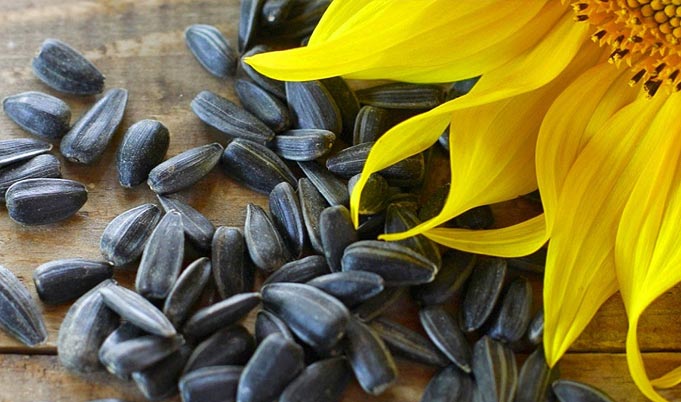
Fans of black oil sunflower seeds include cardinals, jays, woodpeckers, nuthatches, titmice, chickadees, finches, juncos, sparrows, doves, blackbirds, and grackles. It would be valid to say there is a shorter list of those species that don’t like them.
Nutritional content: 40% fat, 16% protein, 20% carbohydrates.
The striped version is larger than the black oil. The shell is thicker and stronger making it more difficult for smaller species. If you are looking to minimize your population of certain smaller types, this may be a good option to offer.
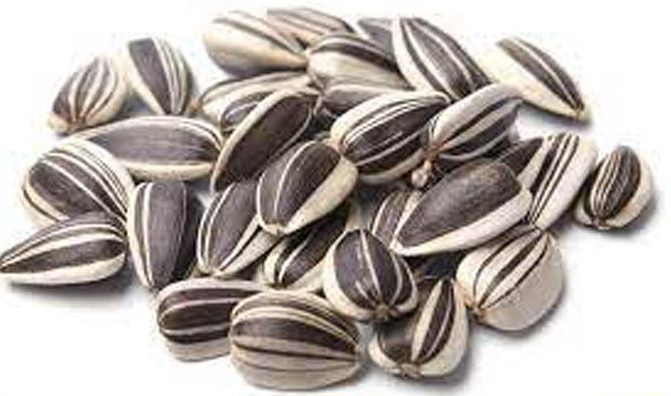
It’s important to mention squirrels also like sunflower seeds. Adding a baffle such as the Mosaic Birds Glass Baffle Dome or Petite Glass Baffle Dome can help deter unwanted visitors at your feeding station.
For additional tips to divert squirrels from feeders, click here for our helpful blog.
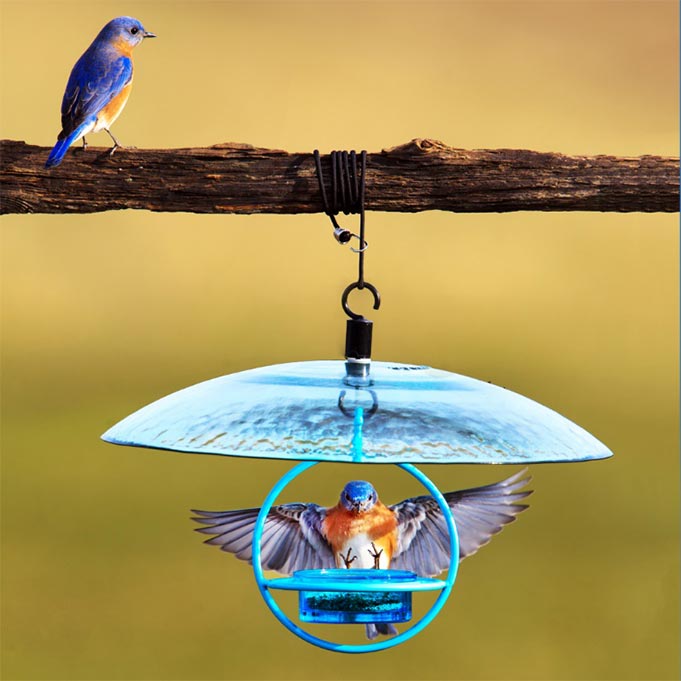
Cardinals, jays, woodpeckers, chickadees, titmice, nuthatches, and grackles will gravitate towards striped sunflower seeds.
Nutritional content: 26% fat, 15% protein, 18% carbohydrates
Hulled sunflower seeds can also be purchased although the downside is they are more expensive by weight and spoil quicker. Apartment dwellers may prefer this option as there is less mess to clean up because there is no shell to discard.
Safflower
For being a small seed, the Safflower offers a bonus for deterring some common backyard pests: squirrels and blackbirds don’t enjoy them while most other birds do. Safflower is better served in tray or hopper-style feeders. Cardinals are big fans along with chickadees, grosbeaks, titmice, nuthatches, doves, and finches, both purple and house. Depending on the region, the list may also include house sparrows and European starlings, to a lesser degree.
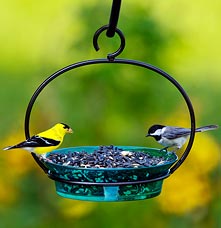
The Mosaic Birds Cuban Hanging Bird Feeder has a sturdy 7 ¾” W glass bowl allowing multiple birds to refuel at once. With its wider base, it’s an exceptional choice for anyone wanting to attract cardinals, who prefer tray style feeders.
Nutritional content: 38% fat, 16% protein, 34% carbohydrates
Nyjer
Also known as thistle and grown in India and Ethiopia, Nyjer is a very small black seed and requires a special feeder. Nyjer will not grow weeds as it is heat sterilized before being sold. Birds attracted to this seed include:
- A variety of finches including American Goldfinches, Lesser Goldfinches, Purple Finch and House Finch.
- Chickadees
- Indigo Buntings
- Doves
- Pine Siskins
- Common Redpolls

Nutritional content: 36% fat, 21% protein, 13% carbohydrates
Suet
Suet is the hard fat found around the kidneys and loins of beef and sheep. It’s most commonly found blended with seeds, grains, fruit, or nuts to provide a great source of energy.
Woodpeckers, nuthatches, and chickadees are fans of this treat, but many species are known to drop in, particularly during colder months, for quick refueling.
Click here for an easy suet recipe you can make at home.
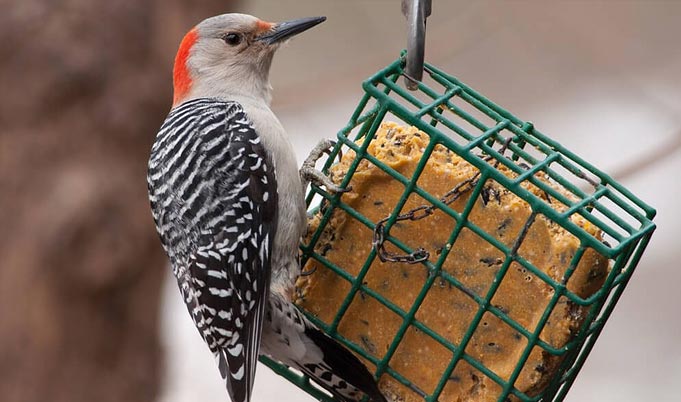
White Proso Millet
Generally, white proso millet is not sold individually but is included in many types of birdseed mixes. Juncos, sparrows, towhees, blackbirds, grackles, and doves are among the types of birds that enjoy this type of food.
White proso millet is best offered in a hopper or tray style feeder or a small amount that will be eaten in a day scattered on the ground. Birds that don’t like it will kick it out of the feeder. Many bird seeds mixes include red proso millet. Ground feeding birds may or may not eat this, leaving a mess.
Nutritional content: 4% fat, 11% protein, 73% carbohydrates
Peanuts
Peanuts provide a significant amount of fat and protein for birds, essential during cold weather. Only larger birds can open the shells so you may also like to offer a shelled version. The safest way to serve peanuts is roasted and unsalted. Birds can’t process high amounts of salt in their diet and may suffer renal failure or other health issues. Some believe raw peanuts contain harmful proteins so if you have the raw variety, simply pop them into the oven for 15 mins at 350 degrees to be safe.
Birds attracted to shelled peanuts include:
- Cardinals
- Jays
- Nutcrackers
- Nuthatches
- Grosbeaks
- Chickadees
- Titmice
- Bushtit
- Starlings
- Cowbirds
- Crows
- Magpies
- Ravens
- Grackles
Peanuts in the shell attract larger birds like certain woodpeckers, grackles, crows, and jays.
Squirrels also like peanuts so you may want to set up a separate feeder for these furry guests, so they don’t overtake food for the birds.
Nutritional content: 49% fat, 26% protein, 19% carbohydrates
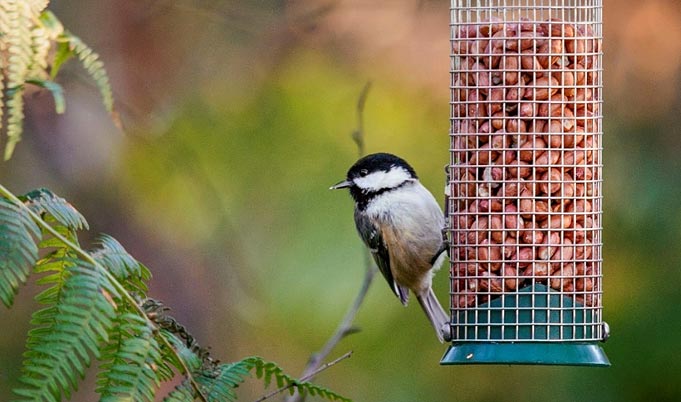
Cracked Corn
Most birds cannot eat whole kernel corn so cracked is used in many mixes. It’s especially popular with house sparrows so avoid this food if they become invasive.
Corn attracts jays, juncos, sparrows, towhees, doves, and quail. Cowbirds and blackbirds are also attracted so consider optimal feeder placements to avoid them visiting. Cracked corn is also a favorite of raccoons, deer, and bears so be cautious of attracting these bothersome and potentially dangerous visitors.
Don’t buy corn marked with a red dye as it is toxic to people and birds and meant solely for planting. Do not serve popcorn of any kind as it spoils quickly and is not good for a bird’s diet.
Nutritional content: 5% fat, 9% protein, 74% carbohydrates
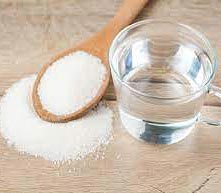
Sugar Water
Sugar water, or nectar, is a sweet treat favored by some of the most desired birds for birdwatching. Although nectar lacks any true nutritional value, hummingbirds and orioles love it for quick energy and turn to insects to get their protein intake.
Nectar is very easy to make yourself. Click here for a simple recipe to make at home.
Nutritional content: 0% fat, 0% protein, 20% carbohydrates
Fruits and jellies
Fruits are healthy snacks for energy and can attract species such as Orioles who may not otherwise visit. Robins, waxwings, bluebirds, and mockingbirds will find your dried fruit attractive!
If using fresh fruit, cut into small chunks and offer small amounts to prevent spoiling.
Orioles love jelly! Only offer a small amount once a day, preferably in the morning. Store-bought jelly is fine but do not use a sugar-free version.
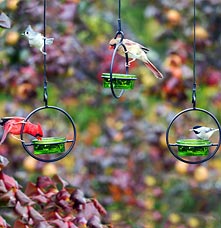
The Mosaic Birds Hummble Basic Bird Feeders add a hint of color to any garden. The 3.4oz recycled glass dish without drainage is ideal for serving jellies, fruits, suet pellets, or even water. Available in assorted colors and packaged in a decorative gift box, they are a great gift whether for the beginner birdwatcher or an experienced fan.
Mealworms
High in fat and protein, mealworms are a healthy snack for backyard birds. They are sold in live or dried forms with the dried variety tending to be cheaper. Live mealworms will go dormant in the fridge but stay alive for a few months. Birds prefer live but you may try combining them with dried to train your visitors. Bluebirds, chickadees, titmice, wrens, nuthatches, and starlings will be especially happy if offered a dish of mealworms.
Nutritional content: 22% fat, 18% protein, 2.5% carbohydrates
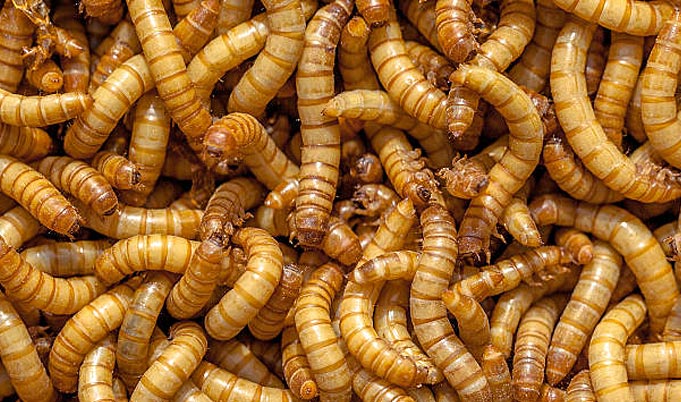
Milo
Also known as sorghum, milo is a common filler in most birdseed mixes but not the most attractive choice to most smaller species or songbirds. Most will kick it out of the feeder where it has the potential to decay on the ground, a potential health hazard for other birds. If you’d like to test milo, set up a low-hanging feeder or start with a small amount on the ground during dry weather.
It attracts large doves such as white-winged and collared along with western jays and ground-feeding birds like grackles, turkeys, quail, pheasants, starlings, and cowbirds. Do not confuse white proso millet, which is good, for milo.
Nutritional content: 4% fat, 11% protein, 72% carbohydrates
Types of Bird Food to Avoid
While they may seem cost-effective overall, inexpensive mixes found at large box stores and home improvement centers often contain filler-type seeds such as milo that may go uneaten or be kicked to the ground. This results in a waste of money as well as become a potential health risk with mold and bacteria when left on the ground too long.
Oats- Only a few birds like starlings and grackles like oats.
Canary seed- As the name suggests, this is best suited for pet birds. Only a few ground-feeding birds and house sparrows like it.
Wheat and other grains- Wild birds would not naturally eat grains.
Other fillers- Rice, flax, golden millet, red millet, buckwheat, rapeseed are not ideal foods for wild birds.
As you’ll find when out shopping for bird food for your feathered friends, many varieties and options are available but the types of birds you’d like to attract will determine the proper food to purchase and where to place your feeder. Take a little time to research what’s most preferred by the species you’d like to attract, and you’ll be well rewarded by the joy of backyard birdwatching.


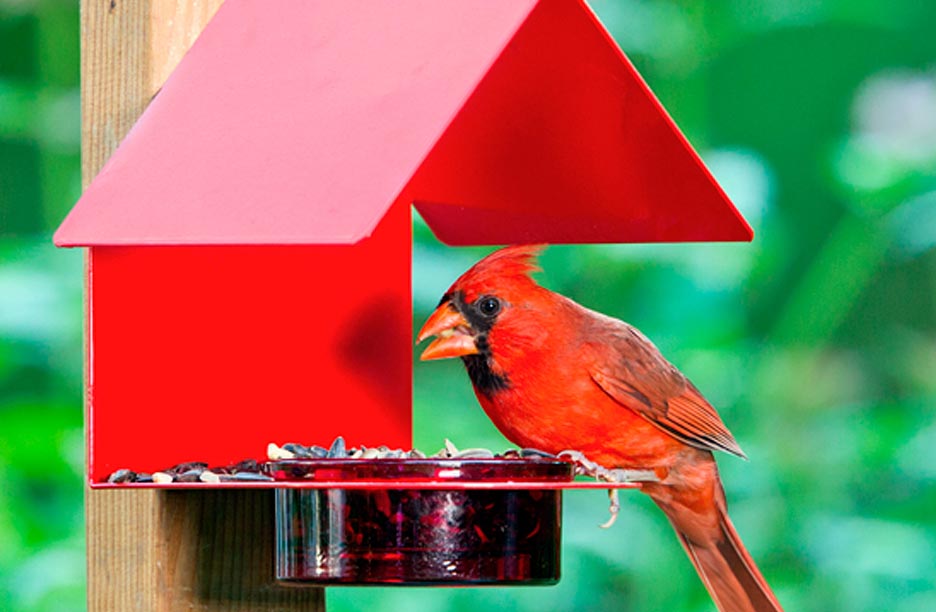
1 thought on “Know the Best Types of Food to Attract Wild Birds”
Comments are closed.